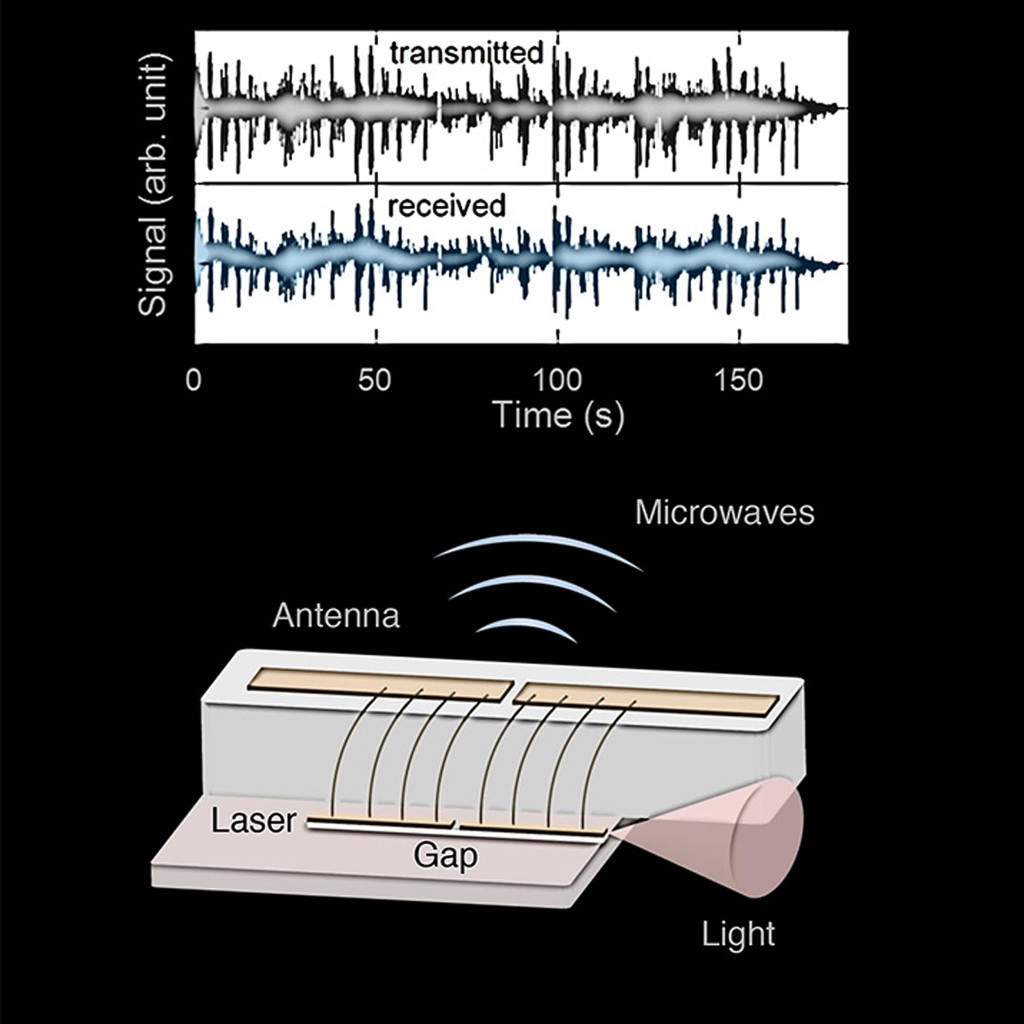For the first time ever, scientists have transmitted the recording of Martin’s classic “Volare” wirelessly using a semiconductor laser. Scientists at the Harvard John A. Paulson School of Engineering and Applied Sciences (SEAS) devised a laser that acts as a radio frequency transmitter. It can emit microwaves wirelessly, modulate them, and receive external radio frequency signals.
This laser frequency combs emit multiple frequencies simultaneously, evenly spaced to resemble the teeth of a comb. Inside the laser, the different frequencies of light beat together to generate microwave radiation. The light inside the cavity of the laser caused electrons to oscillate at microwave frequencies — which are within the communications spectrum.
Marco Piccardo, a postdoctoral fellow at SEAS said, “If you want to use this device for Wi-Fi, you need to be able to put useful information in the microwave signals and extract that information from the device.

Courtesy of Marco Piccardo/SEAS
For the transmission of microwave signals, the device needed an antenna. Scientists etched this gap into the top electrode of the device, creating a dipole antenna. Next, they modulated the frequency comb to encode information on the microwave radiation created by the beating light of the comb. Then, using the antenna, the microwaves containing the encoded information radiate out from the device. The radio signal is received by a horn antenna, filtered, and sent to a computer.
What’s more, scientists discovered that the laser radio could also receive the signals.
Piccardo said, “This all-in-one, the integrated device holds great promise for wireless communication. While the dream of terahertz wireless communication is still a ways away, this research provides a clear roadmap showing how to get there.”
The Harvard Office of Technology Development has protected the intellectual property relating to this project and is exploring commercialization opportunities.
This research was co-authored by Michele Tamagnone, Benedikt Schwarz, Paul Chevalier, Noah A. Rubin, Yongrui Wang, Christine A. Wang, Michael K. Connors, Daniel McNulty and Alexey Belyanin. It was supported in part by the National Science Foundation.
